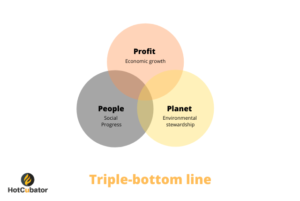
Social entrepreneurship is a multi-dimensional concept and the practice orientation of social entrepreneurship is considerably diverse. The emergence of social entrepreneurship followed different pathways in different parts of the world. A number of factors such as – context, political situation, autonomy of the market, level of government support and myriad of other factors led to the growth of a “third-sector economy” in many parts of the world. In this article, we explore how social entrepreneurship emerged in the USA.
The history of social entrepreneurship in the US dates back to 1970s. It all started after the soaring of oil prices during 1973 that brought an economic downturn and led the government to cut the funding on social welfare. As a consequence, the development of the social entrepreneurial movement in the US was prompted by a supportive ecosystem provided by private foundations and academic institutions as well as a cultural context characterised by the prominence of business approaches (Kerlin, 2006; Poon, 2011).
According to Salamon (1993), social welfare spending in the US was cut by $38 billion over the 1970s-1980s. This, coupled with the increasing competition for funds due to the growing number of non-profits and rising social needs, prompted a shift toward commercial revenue generation. According to Eikenberry and Kluver (2004), the non-profit sector viewed commercial revenue as a means of replacing government funding. This consequently gave birth to the emergence of social enterprise as a widely accepted tool toward addressing social problems caused by the reduced financial role of the state (Kerlin, 2006).
As a result, private foundations provided a range of operational support for emerging social enterprises and entrepreneurial non-profit organisations, while academic institutions developed a broad range of non-profit management degree and certificate programs as well as social entrepreneurship courses within their universities to build capacity for the sector. Private foundations such as the Kellogg Foundation, Kauffman Foundation, Pew Charitable Trust and academic institutions like Yale University, Stanford University, and Harvard Business School all boosted the growth and upliftment of Social Enterprise (SE) sector in the US. Their fundamental mission was to create social welfare and mutual benefits where the formal public welfare system may have failed.
References:
Eikenberry, A. M., & Kluver, J. D. (2004). The marketization of the nonprofit sector: Civil society at risk? Public Administration Review, 64(2), 132-140.
Kerlin, J. A. (2006). Social enterprise in the United States and Europe: Understanding and learning from the differences. Voluntas: International Journal of Voluntary and Nonprofit Organizations, 17(3), 246.
Poon, D. (2011). The emergence and development of social enterprise sectors. http://repository.upenn.edu/sire/8/
Salamon, L. M. (1993). The marketization of welfare: Changing nonprofit and for-profit roles in the American welfare state. The Social Service Review, 67(1), 16-39.








